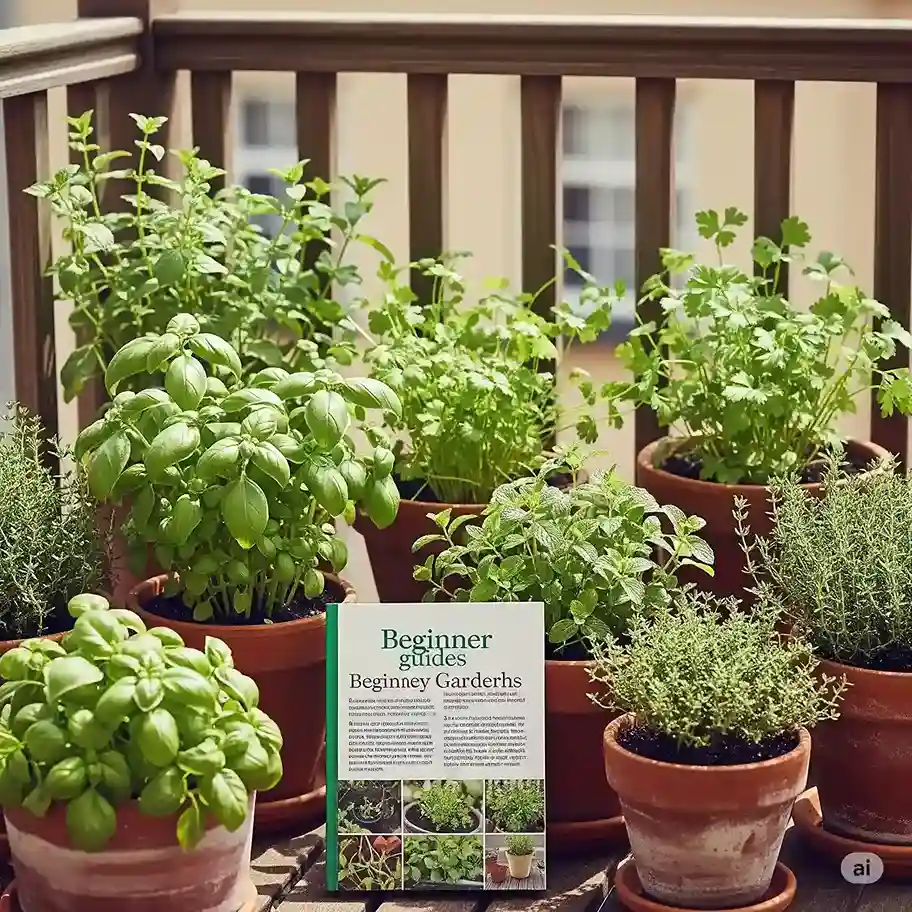
Table of Contents
Introduction :
How to Start a Balcony Herb Garden: Have you ever looked at your balcony and pictured it filled with beautiful green plants and the delightful smell of fresh herbs? Have you ever wondered how a small urban garden can be both soothing and a great source of cooking inspiration?
With more people living in cities, having personal outdoor space is becoming rare, leading many to think of creative ways to bring nature into their lives. Learning how to start a balcony herb garden has become both popular and necessary, giving city residents the opportunity to grow something fresh and healthy even without a big backyard. The idea of a beginner’s balcony herb garden offers hope for those craving green spaces in urban environments. Herbs are especially popular among new gardeners because they are versatile and relatively easy to grow.
Starting a container garden project may seem overwhelming at first, but it’s a fulfilling journey that goes beyond just growing plants. Small space gardening turns everyday cooking into exciting culinary experiences while making the most of limited outdoor space. Understanding how to start a balcony herb garden properly involves more than just placing pots on your balcony—it requires knowledge of plant selection, sunlight requirements, and proper care techniques.
This guide covers everything from choosing the right herbs and understanding their sunlight needs to mastering watering techniques, helping you create your own successful urban garden step by step. Whether you’re interested in fresh ingredients or the satisfaction of gardening in an apartment, we’re here to help you start your gardening journey right from your balcony.
What Makes Balcony Herb Gardens Special?
A balcony herb garden offers numerous advantages for urban dwellers. Fresh herbs provide immediate access to organic, pesticide-free ingredients while reducing grocery expenses. The practice of urban gardening brings nature closer to city living, creating a peaceful retreat that enhances both mental well-being and culinary adventures.
Container gardening on balconies maximizes limited space efficiently. Unlike traditional ground gardens, balcony setups allow for precise control over growing conditions, making them ideal for beginners who want to start small and expand gradually.
Understanding Sunlight Requirements
Sunlight requirements form the foundation of successful herb cultivation. Most herbs thrive with full sun exposure, requiring 6-8 hours of direct sunlight daily. However, several varieties tolerate partial shade conditions, making them suitable for balconies with limited sun exposure.
To evaluate sunlight patterns, observe the balcony throughout different times of day. South-facing balconies typically receive the most consistent light, while north-facing spaces may require shade-tolerant herbs for optimal results.
Space Planning and Weight Considerations
Effective space planning maximizes growing potential without overwhelming the balcony structure. Measure available floor space and consider vertical growing options to expand capacity. Weight restrictions vary by building, so check with property management before installing heavy containers or extensive setups.
Managing Wind and Microclimate Factors
Balconies often experience stronger winds than ground-level gardens. Wind protection strategies include positioning containers against walls, using windbreaks, or selecting naturally wind-resistant herb varieties. Understanding the balcony’s unique microclimate helps in choosing appropriate plants and placement strategies.
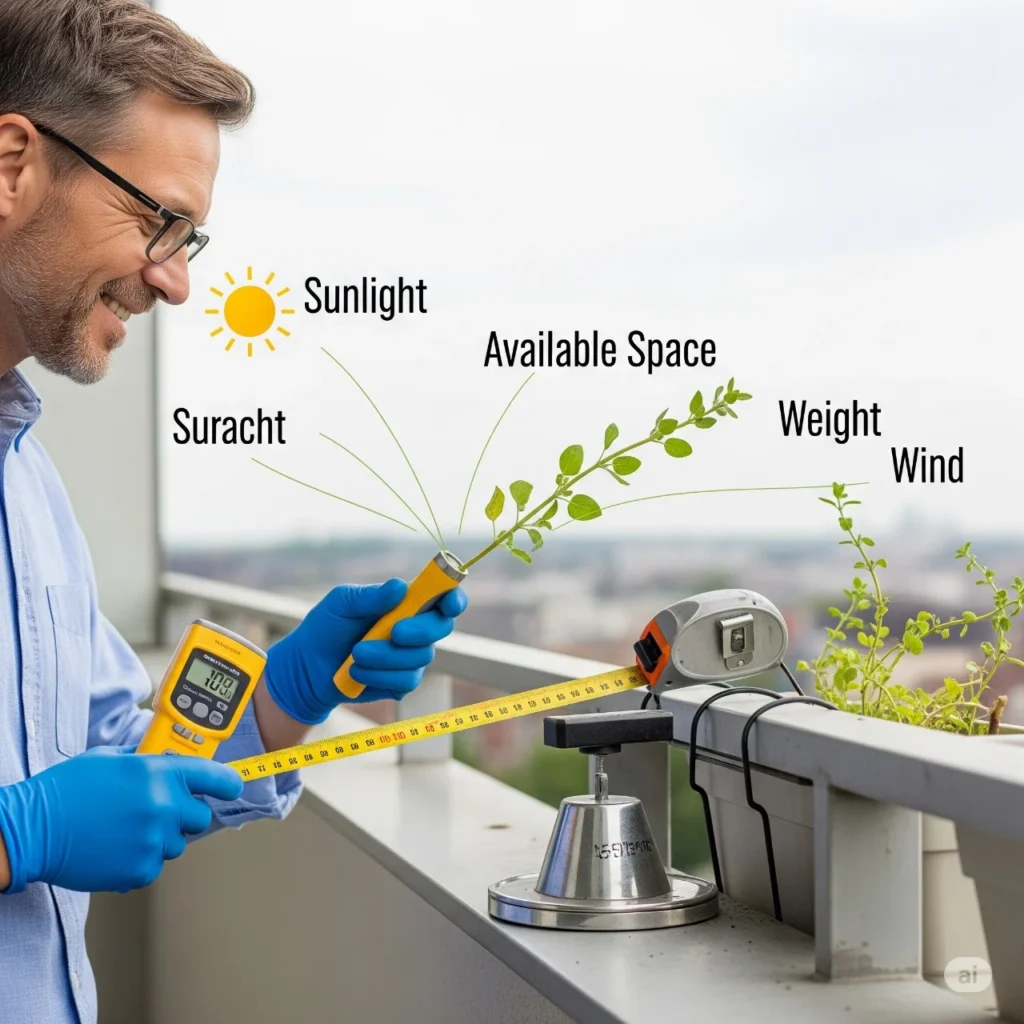
Selecting the Best Herbs for Balcony Growing
Sun-Loving Herbs for Bright Balconies
Mediterranean herbs excel in sunny balcony conditions. Basil ranks among the most popular choices, producing abundant aromatic leaves perfect for pesto and Italian dishes. Rosemary and thyme offer drought tolerance and year-round harvesting potential in mild climates.
Oregano provides robust flavor for cooking while requiring minimal maintenance. These sun-loving herbs develop intense flavors when grown in bright conditions, making them excellent choices for south-facing balconies.
Shade-Tolerant Options for Limited Light
Partial shade balconies can successfully grow several herb varieties. Mint thrives in less sunny conditions and spreads vigorously, making it ideal for beginners. Parsley tolerates lower light levels while providing consistent harvests throughout the growing season.
Cilantro and chives adapt well to partial shade conditions. These shade-tolerant herbs ensure productive gardens even in challenging light situations.
Annual vs. Perennial Herb Considerations
Understanding the difference between annual herbs and perennial herbs aids in long-term garden planning. Annual herbs like basil and cilantro complete their lifecycle in one season, requiring replanting each year. Perennial herbs such as rosemary and thyme return annually, providing ongoing harvests with proper winter protection.
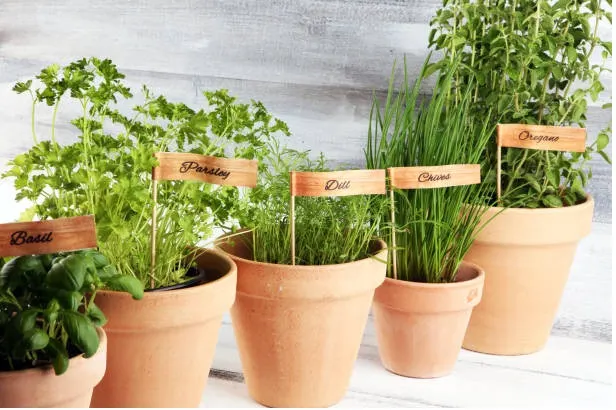
Notes & Tips:
- For practicality, choose herbs you frequently cook with.
- Avoid planting mint and fennel near other herbs to prevent invasiveness.
- Cilantro prefers cooler weather; plant accordingly.
Summary Chart:
| Herb | Light Needs | Maintenance Level | Notes |
| Basil | Full sun | Beginner | Pinch flower buds; great for pesto |
| Mint | Partial shade | Beginner | Keep separate; invasive |
| Parsley | Partial shade | Beginner | Cool spots; versatile |
| Chives | Sun to partial shade | Beginner | Easy and versatile |
| Thyme | Full sun | Low | Drought-tolerant |
| Oregano | Full sun | Low | Drought-tolerant |
| Rosemary | Full sun | Low | Mediterranean flavor |
| Lemon Balm | Partial shade | Shade-tolerant | Good for teas |
| Chervil | Partial shade | Shade-tolerant | Delicate herb |
| Cilantro | Partial shade | Slightly demanding| Cooler climates; avoid hot weather | |
| Lavender | Full sun | Low | Aromatic and drought-tolerant |
| Dill | Full sun | Slightly demanding| Good for pickles and salads | |
| Marjoram | Full sun | Low | Similar to oregano |
Essential Supplies for Your Balcony Herb Garden
Choosing the Right Containers
Containers form the foundation of successful balcony herb growing. Select pots with drainage holes to prevent root rot and waterlogged conditions. Terracotta pots provide excellent breathability but dry out quickly, while plastic planters retain moisture longer.
Pot size significantly impacts plant health and productivity. Most herbs require containers at least 6-8 inches deep, with larger varieties like rosemary needing 10-12 inch pots for optimal root development.
Soil and Growing Medium Selection
Never use regular garden soil in containers. Potting mix designed specifically for container growing provides proper drainage and aeration. Quality soil mixtures contain ingredients like peat moss, vermiculite, and perlite that create ideal growing conditions.
Compost additions enrich the growing medium with nutrients, supporting healthy plant development throughout the growing season.
Seeds vs. Seedlings Decision
Seedlings offer beginners the easiest path to success, providing established plants ready for immediate growth. Seeds cost less but require more patience and skill to achieve successful germination and early growth.
For first-time growers, purchasing healthy seedlings from local nurseries provides the best chance of early success while building confidence and experience.
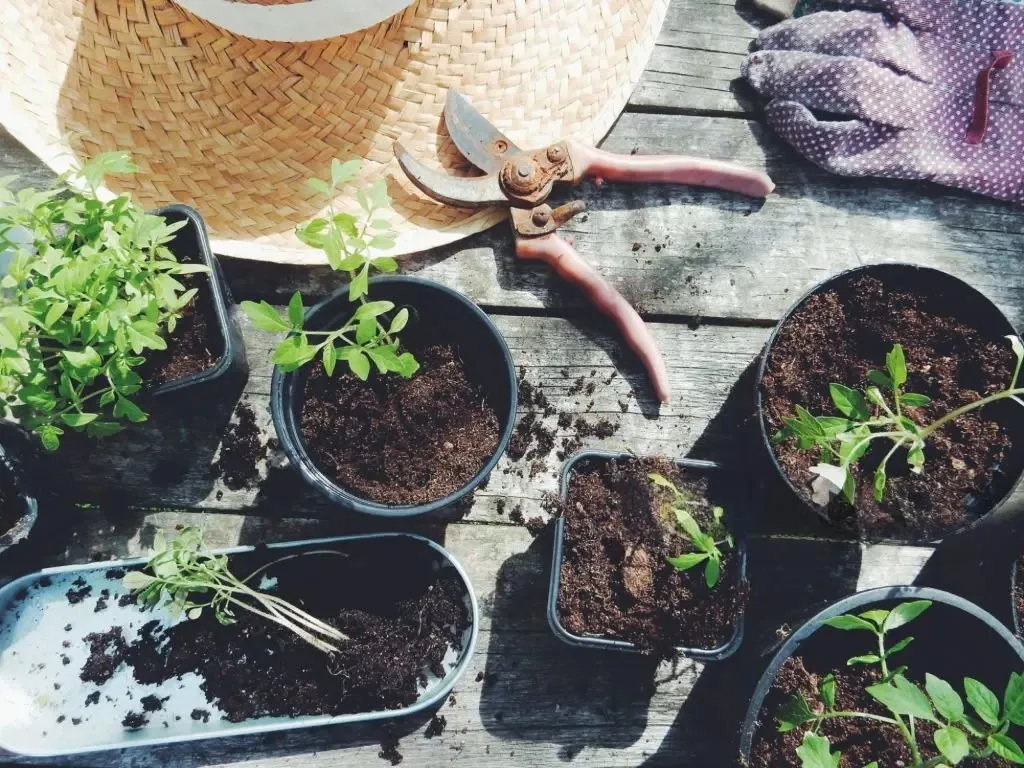
Design Ideas for Small Space Gardens
Vertical Growing Solutions
Vertical gardening maximizes limited balcony space by growing upward rather than outward. Wall-mounted planters, tiered shelving, and hanging baskets create multiple growing levels without consuming floor space.
Railing planters attach directly to balcony railings, utilizing previously unused areas for herb production. These solutions work especially well for trailing herbs and compact varieties.
Creating Efficient Layouts
Strategic garden design considers both aesthetics and functionality. Group herbs with similar water requirements and sunlight needs together for easier maintenance. Position frequently harvested herbs within easy reach while placing decorative varieties in visible locations.
Companion planting strategies can improve plant health and deter pests naturally. However, aggressive spreaders like mint should remain in separate containers to prevent them from overwhelming neighboring plants.
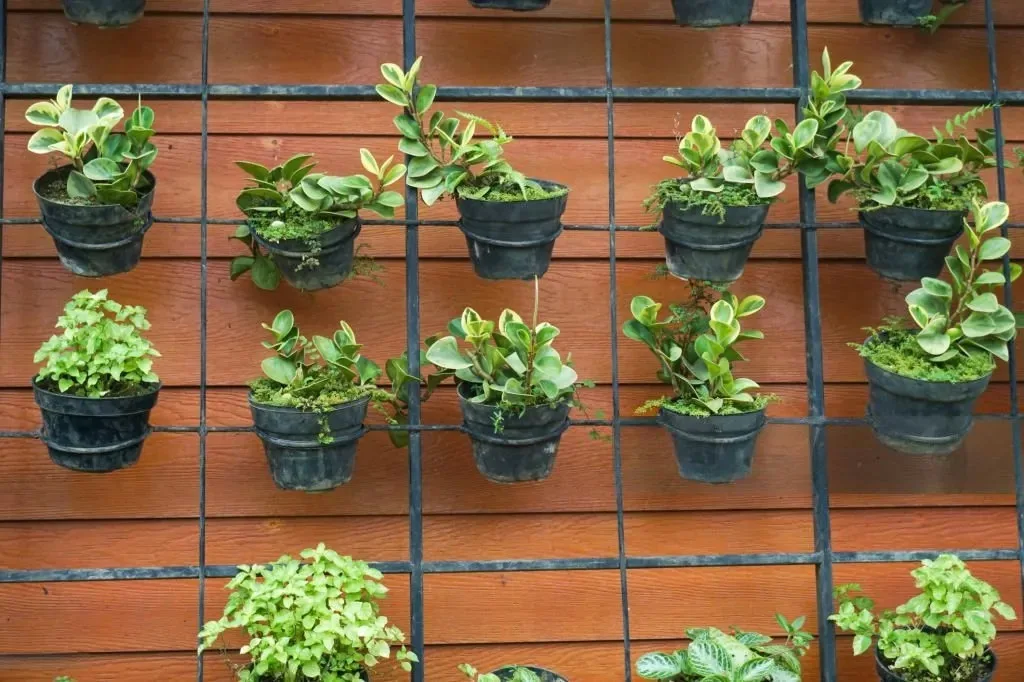
Step-by-Step Planting Process
Timing Your Planting
Seasonal timing significantly impacts planting success. Most herbs perform best when planted after the last frost date in spring, giving them a full growing season to establish. Fast-growing herbs like cilantro and dill can be planted multiple times throughout the season for continuous harvests.
Proper Planting Techniques
When transplanting seedlings, gently loosen root balls before placing them in containers. Plant at the same depth they grew in nursery pots, ensuring proper root-to-soil contact. Spacing requirements vary by herb type, but most benefit from adequate air circulation between plants.
Establishing Good Drainage
Root rot prevention starts with excellent drainage systems. Ensure all containers have adequate drainage holes and consider adding gravel layers in deep pots. Quality potting mix with good drainage properties eliminates most water-related problems.
Daily Care and Maintenance Routines
Mastering Watering Techniques
Watering represents the most critical aspect of balcony herb care. Check soil moisture daily by inserting a finger into the growing medium. Water thoroughly when the top inch feels dry, ensuring water reaches all root zones.
Over-watering causes more problems than under-watering. Signs include yellowing leaves and musty soil odors. Proper watering schedules vary with weather conditions, container size, and plant maturity.
Sunlight and Rotation
Proper sunlight management and plant rotation maximize herb growth and prevent uneven development. Even in consistent light conditions, herbs benefit from regular repositioning to ensure all sides receive equal exposure.
Rotate containers weekly, turning them a quarter turn to promote balanced growth and prevent plants from leaning toward the light source. This simple practice results in fuller, more symmetrical plants with better overall health.
Monitor herbs for signs of insufficient light, such as leggy growth or pale coloring, and adjust positioning accordingly. During intense summer heat, provide temporary afternoon shade to prevent heat stress while maintaining adequate morning and evening light exposure.
Fertilizing for Optimal Growth
Container gardening requires regular fertilizing since nutrients leach out more quickly than in ground gardens. Use balanced, organic fertilizer diluted to half strength every 4-6 weeks during active growth periods.
Avoid over-fertilizing, which can reduce essential oil concentrations and create weak, rapid growth susceptible to pest problems.
Pruning and Harvesting Practices
Regular pruning and harvesting encourage bushy growth and prevent plants from becoming leggy. Pinch growing tips regularly to promote lateral branching. Remove flower buds from herbs like basil to maintain leaf production and flavor intensity.
Harvest techniques vary by herb type, but generally, morning harvesting when essential oils are most concentrated provides the best flavor and aroma.
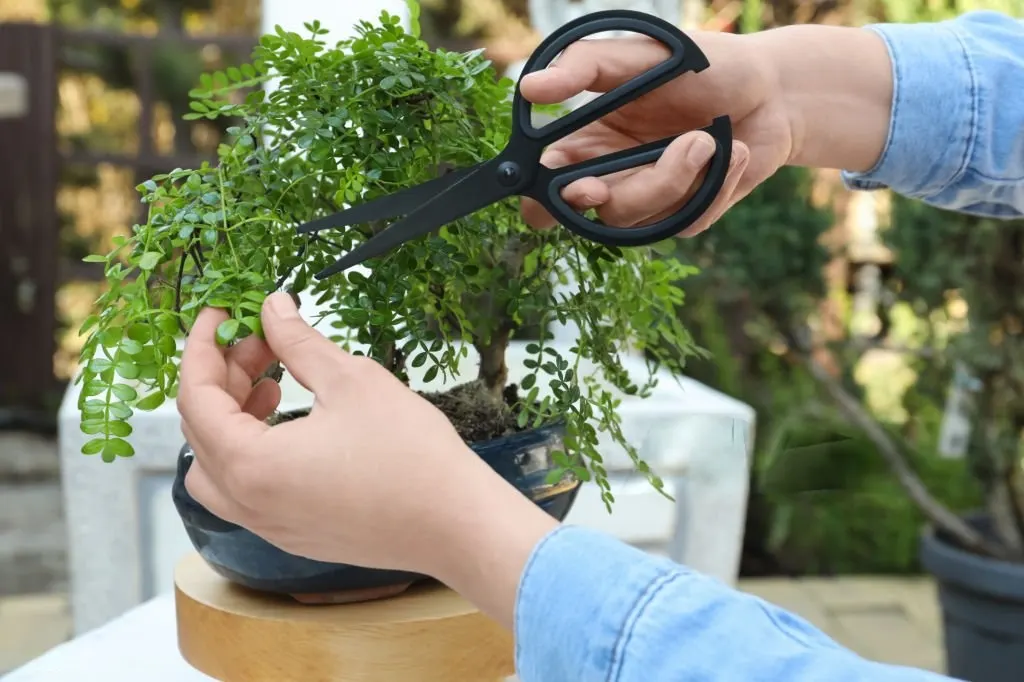
Action: Gather a watering can, trowel, and 2–3 pots with potting mix this week to start your garden
Action:Regularly check plants for pests, prune with clean scissors to promote bushiness, and enjoy your homegrown Thai basil stir fry or other delicious recipes using your harvest!
Pro Tip: Collect rainwater in a bucket to water your herbs naturally, reducing your environmental impact while saving money.
Troubleshooting Common Problems
Managing Pest Issues
While herbs naturally repel many pests, occasional problems may arise. Aphids and spider mites can be controlled through organic methods like insecticidal soap sprays or strong water sprays to dislodge insects.
Companion planting with marigolds provides natural pest deterrence while adding color to the garden. Good air circulation between plants reduces pest pressure and disease problems.
Addressing Plant Health Issues
Yellowing leaves often indicate watering problems or nutrient deficiencies. Leggy plants suggest insufficient light, requiring relocation to brighter areas or supplemental lighting.
Disease prevention through proper spacing, good air circulation, and avoiding overhead watering helps maintain plant health throughout the growing season.
Weather-Related Challenges
Extreme heat may require temporary shade provision or moving containers to protected areas during the hottest parts of the day. Wind damage prevention includes securing lightweight containers and providing windbreaks for delicate plants.
| Issue | Possible Causes | Solutions |
| Yellowing Leaves | Overwatering, under watering, or nutrient deficiency | Check soil moisture; water only when the top inch is dry. Improve drainage with pot saucers. Fertilize monthly with organic seaweed extract, like I use for my parsley. |
| Leggy Plants | Insufficient sunlight | Move pots to get 4–6 hours of direct sun daily. Rotate weekly for even growth. Prune leggy stems to encourage bushy herbs, perfect for small balconies. |
| Pests (Aphids, Spider Mites) | Tiny bugs, webbing, or sticky residue | Spray neem oil or soapy water in the evening, a trick I learned in Chennai. Plant marigolds near basil to repel pests naturally, inspired by Indian organic gardening. |
| Herbs Bolting | Heat or natural lifecycle | Pinch off flower buds to delay bolting. Let cilantro bloom to attract bees and save seeds, a Japanese-inspired technique. |
| Wilting Herbs | Extreme heat or wind | Use shade cloths during Chennai’s hot afternoons. Place pots against walls to block wind, ensuring herbs like mint stay hydrated. |
| Slow Growth | Poor soil or small pots | Use a lightweight potting mix with compost, as I do for thyme. Report herbs like rosemary into 8–12-inch pots for stronger roots. |
Seasonal Care and Winter Preparation
Preparing for Cold Weather
Winter protection strategies vary by climate and herb type. Hardy perennials like thyme and chives may survive outdoors with proper mulching and protection. Tender herbs require indoor relocation or cold frame protection.
Mulching pot surfaces helps insulate roots from temperature fluctuations. Group containers together against building walls for additional warmth and wind protection.
Extending Growing Seasons
Season extension techniques like cold frames, row covers, or greenhouse structures allow continued harvesting into colder months. Indoor growing setups on sunny windowsills provide fresh herbs throughout winter.
Advanced Techniques for Experienced Growers
Succession Planting Strategies
Succession planting ensures continuous harvests of fast-growing herbs. Plant new seeds of cilantro, dill, and other quick-maturing varieties every 2-3 weeks for ongoing production.
Propagation Methods
Many herbs propagate easily from cuttings or division. Mint, rosemary, and other perennials can be multiplied through simple cutting techniques, expanding the garden without additional costs.
Creating Theme Gardens
Themed gardens focus on specific cuisines or uses. Mediterranean herb collections might include rosemary, thyme, and oregano, while tea gardens feature mint, chamomile, and lemon balm varieties.
Conclusion
Starting a balcony herb garden provides urban dwellers with fresh flavors, gardening satisfaction, and connection to natural growing processes. Success depends on understanding basic principles of container gardening, selecting appropriate varieties for available conditions, and maintaining consistent care routines.
Whether working with full sun or partial shade conditions, beginners can create productive herb gardens that enhance both culinary adventures and living spaces. The journey from seedling to harvest offers ongoing learning opportunities and the satisfaction of growing food in small urban spaces.
With proper planning, appropriate plant selection, and consistent care, anyone can master the art of growing herbs on balconies and enjoy the benefits of fresh, homegrown ingredients year-round.
Action:
- “Set up a vertical herb garden” or add new cilantro for succession planting.
- “Check your herbs for signs of overwatering, pests, or nutrient deficiencies” and address these issues promptly.
Share Now:
Show off your balcony herb garden on social media with #TheTrendVaultGardens! Share your inspired basil or mint tips to inspire urban gardeners everywhere.
